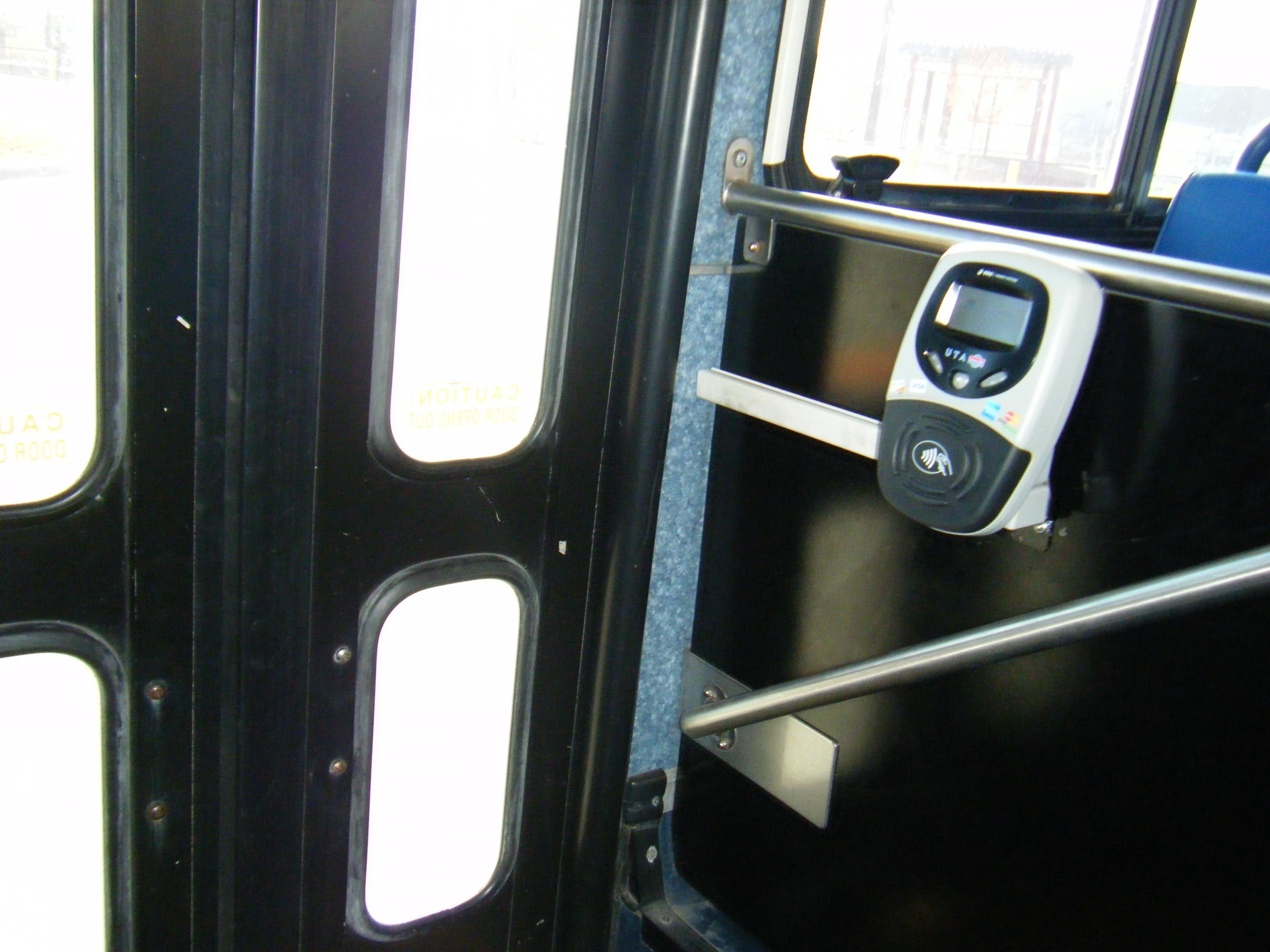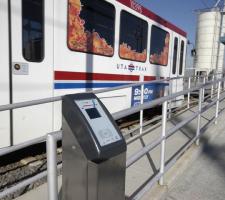
David Crawford talks to a payment system innovator.
The"Most US transit payment systems, such as in Washington, DC and Boston, are closed networks, accepting only their own cards," he says. "But, because UTA's is open-platform, it can accept those of other organisations." The key innovation is the ability to accept, on all transit services, not only the smartcard passes issued by UTA and other bodies that it is actively partnering, but also major contactless bank credit and debit cards. These include American Express expresspay, Discover Network Zip, MasterCard PayPass and Visa payWave, all of which are accepted by merchants across the US.
UTA stresses that it uses the same contactless technology and high-encryption security, to Payment Card Industry (PCI) standards, as bank card issuers do for their products. It has its transactions processed by an established back office and not at reader level.
Phased rollout
Initially, the system is only deducting single adult cash fares from bank cards. UTA will continue to issue period passes and accept cash payments pending their transitioning, over the next two years, by which time it expects EFC to have expanded to become its primary fare collection method.Phase II products slated for development and launch later in 2009 and 2010 - on a slightly longer timescale than originally planned - include a prepayment capability attached to existing contactless bank cards and a replacement for period passes. Says Roberts: "Formal assessments await completion of these rollouts. But, currently, anecdotal reports of passenger and internal stakeholder satisfaction are positive."
UTA is also working on the integration into the EFC system of its discounted fares for senior citizens, the disabled and those on low incomes. For those without bank accounts, it is exploring prepaid solutions which could include the distribution of UTA gift cards via retail outlets throughout the region.
EFC is not, however, yet available on UTA paratransit vehicles or services. The reason, says Roberts, is that, "our paratransit division viewed other innovations as higher priorities and we have not yet set a date for EFC availability".
Interoperability
The advantage of the bank card approach is that interoperability with many other US EFC smartcard schemes, for example those of the Boston-centredThe passes contain smartcard chip/RFID antennae that are compatible with the UTA system. The carriers of these passes currently constitute the majority of users of the new EFC system.
Administration is on a contract basis. "The advantage of this approach", says Roberts, "is that it gives more administrative control to the college or employer, and reduces the risk of fraud for both them and UTA. A student or employee is far less likely to give away their ID card to someone who is not eligible to use it than they are to give away a separate transit pass." For the benefit of Utah's tourist industry, ski passes - such as the Ski Salt Lake Superpass and Cottonwood Canyon Resort employee passes - are valid on UTA ski buses and feeder services during the December-April season.
TO/TO
UTA is also one of a small but growing number of public transport authorities worldwide to have introduced Tag On/Tag Off (TO/TO) for EFC on buses as well as on railed vehicles - the "one simple rule" that all users are expected to follow, according to Chief Technology Officer Clair Fiet. This is a critical element in justifying UTA's US$10 million EFC system as a long-term investment for enhanced planning and scheduling.Says Roberts: "The data gathered will be invaluable in improving our overall bus service. Better understanding of actual travel patterns will enable us to reduce travel times, decrease numbers of transfers and provide more direct routes.
"This, in turn, will generate higher usage among existing riders and attract new ridership as the system improves. Acceptance of bank cards will also attract riders who dislike using cash; again, the new system will also allow us to create innovative new fare products to replace the traditional monthly pass."
He admits, however, to public concerns over privacy. "Our response is to describe the data-gathering process. With bank card transactions, we use a third party to process transactions and do not retain any personally identifiable information.
Fare payment interoperability in the US
Martin Schroeder, Senior Program Manager, Rail and Energy, with the American Public Transport Association (APTA), sees mobile phone downloads following hard on the heels of bank cards as the future medium of choice in US deployment of transit payment interoperability; this contrasts with the current European emphasis on compatibility between dedicated smartcards and similar payment media such as fobs.
APTA's Universal Transit Farecard Standards task force is actively developing the US Contactless Fare Media System (CFMS) standard. This came in to pave the way for an open architecture payment environment that would promote greater access to public transport and enable integration of independent payment systems.
Originally intended for contactless smartcard applications, its relevance to other payment media has become apparent. A data structure conforming to CFMS-defined requirements can, for example, enable bank cards to accommodate transit fare payment, while mobile phones fitted with an appropriate microprocessor and antenna can be loaded with a CFMS-configured transit application."With our pass partners, again, we do not retain any records on individual recipients. We can identify the organisation and provide it with aggregate reports that do not allow individual tracking."
"Cases where high numbers of riders alight at the same stop typically occur at the end of the bus line. These do not typically cause service delays in service owing to turnround layovers." Policing of the full TO/TO regime is rigorous. There were fears that the extra effort might lead students in particular to dismiss it as too much bother and so risk the completeness and accuracy of travel pattern data.
Smart pass holders who fail to comply thrice in a row, or within a two-week period, face deactivation. They will then have to go back to their issuing organisation for revalidation before their pass will work again on UTA services.
Among carrots for bank card holders is the fact that they need to tag off in order to take advantage of a two-hour time window that allows them to transfer to another bus service for the same single-trip fare. On transferring to the distance-based charging FrontRunner commuter rail line, they need to tag off at their destination stations so that the system knows to charge them only for the stops travelled - otherwise it automatically deducts the maximum, full-length journey fare; the overall saving can be at least US$4 per trip. Another incentive, which UTA is currently considering, would offer fare reductions to bank card holders that remember to comply. UTA hopes in future to enable passengers to gain transfer information by dialling from their cellphones for the status of their next bus or train. Work on the necessary planning and design requirement is due to get under way during 2009.
Another incentive is the fact that on the FrontRunner commuter rail line, which uses distance-based charging, bank card holders need to tap off so that the system knows to charge them correctly rather than at the maximum, full-length journey fare level. The saving can be as much as US$2 per trip. A third, which UTA is currently considering, would offer fare reductions to bank card holders that remember to comply.
UTA and EFC
UTA runs over 600 buses, the 3500 South MAX bus rapid transit service, 30 cars on its FrontRunner commuter rail link, and the TRAX (TRAnsit eXpress) light rail system. This carries some 60,000 passengers a day along its main 25km Salt Lake City-Sandy line and the 6.5km University line, with a planned extension to Salt Lake International Airport.For the EFC system, UTA developed the onboard unit internally. Other project partners are: primary systems supplier, integrator, contract back office host and payment processor, ERG Group/ERG USA; reader boards for validators, OTI; mobile in-bus gateways/routers, In-motion; continuous mobile communications are via AT&T; and acquirer services are from Zions Bank/TransFirst.
Says Roberts: "We are already attracting a good deal of interest and visits from other US transit administrations."
RSS












